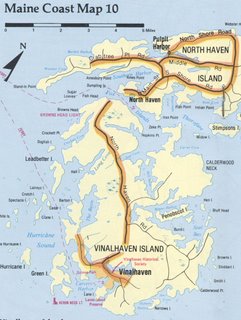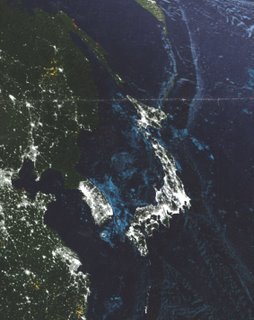GCMC Maps Involved in the New Honda Plant
On June 28, 2006, the big story in Indiana newspapers was an article touting the news that Honda had selected a site near Greensburg, Indiana, for its latest vehicle assembly plant. According to the Anderson
Herald Bulletin, this factory would produce 200,000 vehicles per year and provide at least 2,000 jobs to the local economy. Indiana competed with Ohio, Michigan, Wisconsin, and Illinois to be the home of the plant.
Before Indiana could compete for the Honda plant, however, the site had to be approved for development. The proposed site would require a survey to record the location of any significant archeological sites, such as burial grounds or historic villages. It was during this initial preparation phase of the development that maps from the Geospatial Center & Map Collection (GCMC) were involved.
Larry Stillwell, an Archeologist with Archeological Consultants of Ossian, borrowed maps from the GCMC to research the projected site. Stillwell is a Ball State University graduate (M.A. in Anthropology), and regularly uses the maps and soil surveys from the Map Collection for his business projects. Land may need to be surveyed to determine the locations of cell phone towers, road improvements, or the development of a huge factory as in this case. Stillwell may be studying a site as small as 90 square feet or as large as several thousand acres. The proposed Honda site is about 1,700 acres of land.
In preparation for the Honda project, Stillwell surveyed the parcel of land and recorded the locations of any archeological sites. In this case, he documented 141 sites. Stillwell did not classify any of the archeological sites as having significant value, so the development of the site could continue.
For the next part of his research, Stillwell visited the GCMC to consult topographic maps of the area in Decatur County. He copied relevant sections of the maps and transposed the archeological sites onto the copies of the maps. Stillwell then issued a report for the developer and forwarded the findings to the State Historic Preservation Office. The archeological report is then reviewed by the state, and the site may then be developed or further evaluated. The State Historic Preservation Office maintains a database including the recorded archeological sites from copies of the maps Stillwell makes in the GCMC.
Stillwell claims that 99% of all archeological sites recorded in the state are considered insignificant and would not delay development. Over 1,100 archeological sites are on file for Delaware County, Indiana.
The GCMC is a depository for maps and includes an extensive collection of USGS topographic maps covering the United States, both historic and current. Please contact the Center or visit the second-floor of Bracken Library if you would like to use topographic maps or any other kinds of maps for projects and research.





